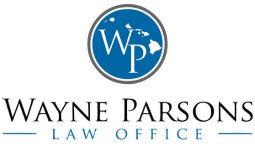Motorcycle Wreck Injuries
All Islands in Hawai‘i are wonderful places to ride a motorcycle and off road areas are also great fun. However the risks of riding motorcycles must be considered by anyone who mounts a cycle for a ride in paradise. The number of motorcycle injury and death incidents has climbed to alarming levels. Automobile, Motorcycle and Pedestrian Deaths On Oahu Continue to Rise
Knowing the law is a good starting point but to really be safe it is important to take a course in how to drive a motorcycle. Also joining the motorcycle association and becoming involved in understanding how these tragic injury and death cases occur is wise. Here’s the law:
Motorcycles operating two abreast in same lane: Yes. §291C-153 – Operating motorcycles on roadways laned for traffic. (a) All motorcycles are entitled to full use of a lane and no motor vehicle shall be driven in such a manner as to deprive any motorcycle of the full use of a lane. This subsection shall not apply to motorcycles operated two abreast in a single lane.
Lane Splitting: §291C-153 Operating motorcycles on roadways laned for traffic (b) The operator of a motorcycle shall not overtake and pass in the same lane occupied by the vehicle being overtaken. (c) No person shall operate a motorcycle between lanes of traffic or between adjacent lines or rows of vehicles.
State Insurance Requirements: Compulsory Liability (Minimum Limits)(20/40/10) – 15% insurance discount for graduates of rider education program.
Turn signals: None required.
Safety Helmet: Not required by law-reflectorization required, required under age 18
Eye Protection: Required by law unless equipped with windscreen.
Off road use includes none of these requirements.
Hawai‘i’s current motorcycle laws: §286-81 Motorcycle, motor scooter, etc.; protective devices.
(a) No person shall:
(1) Operate a motorcycle or motor scooter, on any highway in the State unless the person and any passenger the person carries on the motorcycle or motor scooter wears:
(A) Safety glasses, goggles, or a face shield, in the case of a motorcycle or motor scooter that is not equipped with windscreens or windshields; and
(B) Any other protective devices, other than a safety helmet, required by rules adopted by the director.
For the purpose of meeting the requirements of this paragraph, a required device shall meet the specifications and requirements established by rules adopted by the director;
(2) Lease or rent a motorcycle or motor scooter to another person unless the person furnishes:
(A) Safety glasses, goggles, or a face shield, in the case of a motorcycle or motor scooter that is not equipped with windscreens or windshields; and
(B) Any other protective devices required by the rules adopted by the director for the use of the person or persons intending to operate or ride as a passenger on the motorcycle or motor scooter; provided that any person to whom a motorcycle or motor scooter is leased or rented may furnish for the person’s own use the protective devices required by this part.
For the purposes of meeting the requirements of this paragraph, a required device shall meet the specifications and requirements established by rules adopted by the director; or
(3) Sell or offer for sale or furnish any safety helmet, safety glasses, goggles, face shield, windscreen, windshield, or other protective devices represented to meet the requirements of this part unless the device meets the specifications and requirements established by rules adopted by the director.
(b) No person less than eighteen years of age shall operate or ride as a passenger on a motorcycle or motor scooter on any highway in the State unless the person wears a safety helmet securely fastened with a chin strap.
(c) A safety helmet shall not be required for any person who operates or rides as a passenger on a motorcycle or motor scooter; provided that the motorcycle or motor scooter:
(1) Has three wheels;
(2) Is powered by an electric motor;
(3) Has a full body enclosed cab; and
(4) Has a seat belt assembly or a child restraint system for the driver and passenger;
and the operator and passenger uses the seat belt or child restraint system pursuant to sections 291-11.5 and 291-11.6. [L 1967, c 214, pt of §2; HRS §286-81; am L 1968, c 48, §2(d); am L 1977, c 183, §1; am L Sp 1977 1st, c 20, §12; gen ch 1985; am L 1994, c 120, §2]
